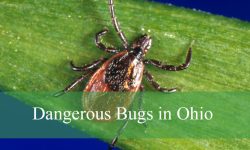The Pink-Striped Oakworm Moth is a fascinating member of the Lepidoptera order, renowned for its distinctive pink-striped appearance. This moth species is commonly found in various regions of North America, particularly in deciduous forests where oak trees thrive
About The Pink-Striped Oakworm Moth
The Pink-Striped Oakworm Moth, scientifically known as Anisota virginiensis, is a fascinating species that has captured the attention of entomologists since its discovery by British entomologist Dru Drury in 1773. Its life cycle encompasses distinct stages, each marked by unique characteristics and behaviors.
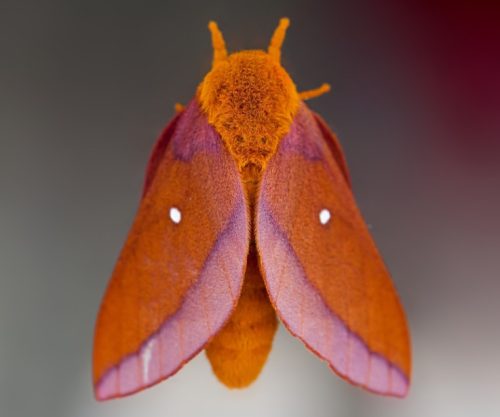
Characteristics and identification of Pink-Striped Oakworm Moth
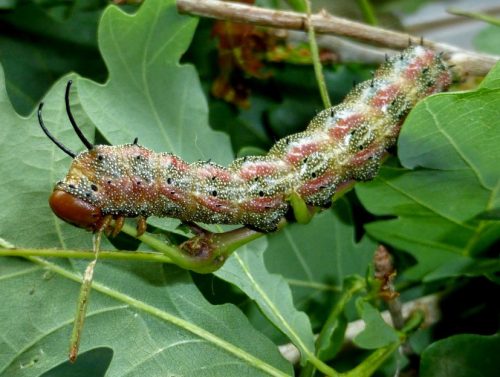
During the caterpillar stage, these creatures exhibit a striking appearance, with a greenish-brown or gray body adorned with rosy or brownish yellow stripes. Notably, long pink stripes run along the length of their bodies, alongside scales on each segment and two elongated spines on the mesothorax.
As the seasons change, the larvae overwinter in the soil, eventually transitioning into the pupal stage for a short period. The emergence of the adult moth brings to light the concept of sexual dimorphism, with females appearing larger and displaying visible physical differences. Males, on the other hand, possess a distinct translucent patch and slightly darker coloring. Furthermore, behavioral disparities are evident, with females drawn to nighttime lights while males are active during the day. The intricate wings of the adult moths boast varying shades of purple when open, are adorned with visible white spots, and demonstrate an erratic flight pattern. The average wingspan of the adult moth ranges from 4.2 to 6.6 cm. Their peak season spans from May to September, adding a touch of vibrancy to the natural landscape.
Habitat of the Pink-Striped Oakworm Moth
In terms of reproduction and habitat, the Pink-Striped Oakworm Moth exhibits a noteworthy egg-laying behavior, with eggs carefully placed beneath the leaves of their host plants. These moths are primarily found in the lush woodlands of Canada and the United States, favoring deciduous environments that house diverse oak varieties. Despite their short lifespan of approximately a month, they play a significant role within these ecosystems.
Surprisingly, adult Pink-Striped Oakworm Moths do not engage in feeding activities, relying on energy reserves accumulated during their earlier stages. Interestingly, their appearance sometimes leads to initial confusion, with male moths occasionally mistaken for bees, a testament to their intriguing visual resemblance to these buzzing insects.
Frequently asked questions about Pink-striped oakworm moth
Pink-striped oakworm moth, male vs. female?
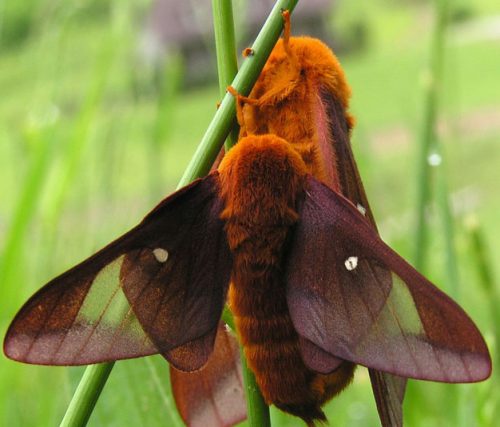
Compared to men, females are larger. The female’s upperside is orange, with a light purple hue at the wing margins. There are fewer or no stray black dots. Male upperwings are dark brown with a large translucent white spot on the forewing and a hint of red on the hindwing.
Are pink-striped oakworm moth poisonous?
The pink-striped oakworm moth is typically not harmful to humans and is not toxic. You don’t have to worry too much. The pink-striped oakworm moth is a plant-eating insect that typically doesn’t cause too much trouble. You must, however, take it seriously if you notice that the number is rising.
Pink-striped oakworm moth eggs?
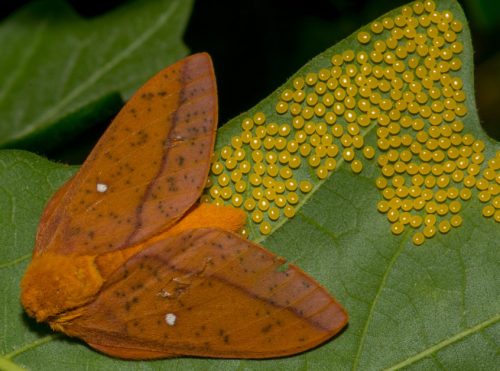
Oaks are typically infested by the pink-striped oakworm moth. Though less frequently, hazel, maple, and birch trees are also infested. The adults produce spherically shaped, greenish-yellow eggs. The larvae have dull brown, yellow, or light pink stripes and are gray, green, or tan in color.
What is the pink-striped oakworm moth’s life cycle?
The insect goes through four stages in its life cycle: the egg stage, the larval stage, the pupal stage, and the adult stage. It is from late June to early July that the adults emerge from their pupal caverns. Males are drawn to the pheremone that the females release. The males mate once they have located the females.
People Who Read This Also Read:






